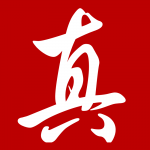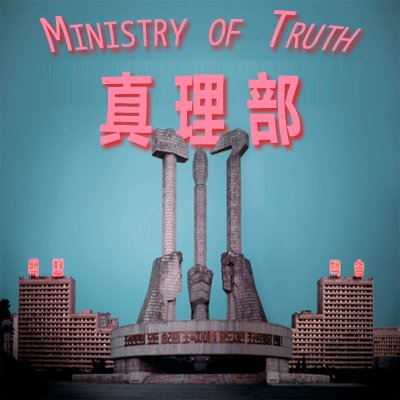The following censorship instructions, issued to the media by government authorities, have been leaked and distributed online. The name of the issuing body has been omitted to protect the source.
All websites: Regarding China’s 5G development, it is currently inappropriate to publicize construction of the world’s first 5G commercial network, or publish material—such as seizing speaking rights on international standards—that could easily fan international resistance. (December 9, 2018) [Chinese]
Huawei, the world’s largest telecommunications equipment manufacturer, has been placed squarely in the middle of the U.S.-China trade war after Canadian authorities arrested Meng Wanzhou—who is Huawei’s CFO and founder Ren Zhengfei’s daughter—on a U.S. extradition warrant for allegedly committing fraud and violating American sanctions on Iran. Coverage of Meng’s arrest has since been censored. Despite Huawei’s legal troubles potentially hindering China’s 5G vision, China Mobile, China Unicom, and China Telecom have been granted 5G radio frequency spectrum allocations to undergo final trials before commercial rollout from 2020. From Li Tao at the South China Morning Post:
While Meng’s extradition case could go on for months, there is speculation that Washington is looking to impose a US export ban on Huawei.
“If that happens, it will be a serious setback to China’s 5G timeline, and it will also significantly weaken China’s bargaining position in the trade negotiations [with the US],” Jefferies equity analyst Edison Lee said in a report.
“China will unlikely want to build 5G without Huawei,” he said. “To get Huawei out of such an export ban, the US is likely to ask for concessions in China’s tech subsidy and Buy China policy in various industries, including telecoms.”
[…] Despite that threat, Huawei has continued to push forward its 5G initiatives and has signed 22 commercial contracts overseas to date. Huawei recently announced a memorandum of understanding with Altice Portugal, one of 15 carriers in Europe that look to use the firm’s 5G equipment. [Source]
Citing national security concerns, countries have increasingly banned Huawei from providing tech for their 5G rollouts. Of the Five Eyes intelligence alliance, the U.S. led the charge in effectively banning Huawei in 2012, with Australia following suit this past August and New Zealand in late November. In Canada, two U.S. senators warned Prime Minister Trudeau to ban its participation; today, Canada’s spy agency has warned universities about research ties with Huawei. In the UK, MI6 spy chief Alex Younger gave a rare public address last week citing concerns. Beyond Five Eyes, Japan has become the latest country to ban both Huawei and ZTE from 5G participation.
For more on countries that have banned Huawei and why, read this recent coverage from Al Jazeera.
The Economist further details why China’s 5G efforts are worrisome for other countries, and cautions against excessive concern:
[…] Huawei has long been dogged by suspicions that it co-operates rather too closely with China’s government. Ren Zhengfei, its founder, used to be in the People’s Liberation Army. Western spooks have mused publicly about the risk that Huawei’s kit might be siphoning valuable data back to Beijing, or that it comes with “back doors” that would allow state-sponsored hackers to eavesdrop on, or even disrupt, another country’s communications.
The firm has always denied any improper links with the Chinese state, and researchers have never found any evidence of such back doors. But sceptics wonder how possible it is for even a well-intentioned firm to avoid forced cooperation with the Chinese government. Given that America’s government is not above implanting bugs into kit made by its own technology firms, it would be a leap to assume that China’s intelligence services were not at least exploring similar possibilities.
The looming transition to 5G provides an obvious peg on which to hang such worries. 5G networks offer greatly increased capacity and snappy response times. For that reason it is often seen as a vital enabling technology for the “Internet of Things”, in which all manner of devices, from cars and industrial robots to toasters and children’s toys, will talk to each other, and to the internet at large. […] The more connected the world becomes, the argument runs, the greater the risk of allowing a Chinese firm to be in charge of the infrastructure upon which it all depends.
[…] Such concerns are not idle. Yet, like the technology itself, they can be overhyped. For the foreseeable future, 5G networks will be used much like existing ones. Most analysts believe the biggest driver of adoption will be consumers keen to watch even more streaming video on their smartphones. Deployment will be limited at first to city centres, and then spread more slowly to the rest of the world. The more systematic changes driven by 5G will take longer to materialise. 5G has become a lightning-rod for concerns about Chinese technology. But the hyperconnected future is not as imminent as you might think. [Source]
At Financial Times, Emily Feng points out that while Huawei’s supply chain is less vulnerable to an export ban than ZTE, it could nonetheless significantly restrict China’s ability to advance 5G developments:
Unlike ZTE, which sourced nearly all of its chips from US companies, Huawei employs more than 10,000 people at its HiSilicon R&D unit, which this year launched the Kirin 980, its first artificial intelligence-enabled mobile chip set.
Huawei also relies on Micron, a US chip company, to supply memory chips that go into its smartphones. Should a US export ban be imposed, Huawei could switch to source more from South Korean memory chip companies, such as existing supplier SK Hynix.
[…] But other American-designed components are not replaceable in the short term. Intel processors power Huawei’s personal computers, while Huawei’s mobile handsets depend on radio frequency components from US based chipmakers Skyworks and Qorvo, according to Arete Research and Goldman Sachs.
Most importantly, a US export ban would delay Huawei’s plan to roll out commercial standalone 5G service by next April.
[…] Huawei is a linchpin in Beijing’s ambitions to be a global technological innovator by 2025 and Ms Meng’s arrest has been largely read in China as a move from the US to further constrain Chinese technology from competing globally. [Source]
 Since directives are sometimes communicated orally to journalists and editors, who then leak them online, the wording published here may not be exact. Some instructions are issued by local authorities or to specific sectors, and may not apply universally across China. The date given may indicate when the directive was leaked, rather than when it was issued. CDT does its utmost to verify dates and wording, but also takes precautions to protect the source. See CDT’s collection of Directives from the Ministry of Truth
Since directives are sometimes communicated orally to journalists and editors, who then leak them online, the wording published here may not be exact. Some instructions are issued by local authorities or to specific sectors, and may not apply universally across China. The date given may indicate when the directive was leaked, rather than when it was issued. CDT does its utmost to verify dates and wording, but also takes precautions to protect the source. See CDT’s collection of Directives from the Ministry of Truth







